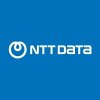


i
Persistent
Systems
Work with us
![]()
Filter interviews by
Persistent Systems Qa Module Lead Interview Questions and Answers
Persistent Systems Qa Module Lead Interview Experiences
1 interview found
I appeared for an interview before Jan 2023.
(1 Question)
- Q1. How many years experience tou have
(1 Question)
- Q1. What is your strength
(1 Question)
- Q1. Tell me about yourself
(2 Questions)
- Q1. What is your weakness
- Q2. Why should we hire you
(1 Question)
- Q1. Why should we hire you
(1 Question)
- Q1. Tel me situation when you have overcome an difficult situation
About the tools you worked on
Interview Preparation Tips
What people are saying about Persistent Systems





Interview questions from similar companies

I applied via Naukri.com and was interviewed before Feb 2021. There were 3 interview rounds.
(2 Questions)
- Q1. About Technical subjects
- Ans. Technical subjects
- Q2. Technology subjects
Subject
(8 Questions)
- Q1. Where do you see yourself in 5 years?
- Q2. What are your strengths and weaknesses?
- Q3. What is your family background?
- Q4. What are your salary expectations?
- Q5. Share details of your previous job.
- Q6. Why should we hire you?
- Q7. Why are you looking for a change?
- Q8. Tell me about yourself.
Interview Preparation Tips

I applied via Naukri.com and was interviewed in Jan 2021. There were 3 interview rounds.
Interview Questionnaire
1 Question
- Q1. All basics and some advance questions of .net
Interview Preparation Tips

I applied via Referral and was interviewed in Mar 2021. There were 3 interview rounds.
Interview Questionnaire
1 Question
- Q1. OOP principles, IOC principles, AOP principles
Interview Preparation Tips

I applied via Recruitment Consulltant and was interviewed before Aug 2021. There was 1 interview round.
(1 Question)
- Q1. AR integration in unity 3D
- Ans.
AR integration in Unity 3D allows for immersive experiences by overlaying digital content onto the real world.
Unity's AR Foundation package provides a cross-platform solution for AR development
ARCore and ARKit are supported by AR Foundation for Android and iOS devices respectively
Vuforia is another popular AR platform that can be integrated with Unity
AR integration requires a camera and sensors to track the user's envi...
Interview Preparation Tips
Interviewer are pretty friendly. Be honest.
Skills evaluated in this interview

I applied via Naukri.com and was interviewed before Mar 2021. There were 2 interview rounds.
(1 Question)
- Q1. IMS, Diameter, SIP, Deployment, Testing
(1 Question)
- Q1. How to check signal in lab during testing?
- Ans.
Signal can be checked in lab during testing using various equipment and techniques.
Use oscilloscope to measure voltage and frequency of signal
Use spectrum analyzer to analyze frequency spectrum of signal
Use signal generator to generate and test signals
Use multimeter to measure signal strength and continuity
Use logic analyzer to analyze digital signals
Perform signal integrity testing to ensure signal quality
Use simulati...
Interview Preparation Tips

Interview Questionnaire
1 Question
- Q1. Interviewer asked about DevOps tools and AKS deployment approach.
Interview Preparation Tips

I applied via Naukri.com and was interviewed in Feb 2021. There were 3 interview rounds.
Interview Questionnaire
1 Question
- Q1. Regarding the technology whatever I mentioned in my resume. Detail level questions from those area
Interview Preparation Tips

I applied via Job Portal and was interviewed in Feb 2021. There was 1 interview round.
Interview Questionnaire
1 Question
- Q1. All about core VMWARE
Interview Preparation Tips

I applied via Approached by Company and was interviewed in Nov 2023. There was 1 interview round.
Use java 8 to find the first repeated character in a given string
Persistent Systems Interview FAQs
Tell us how to improve this page.
Persistent Systems Interviews By Designations
- Persistent Systems Software Engineer Interview Questions
- Persistent Systems Senior Software Engineer Interview Questions
- Persistent Systems Lead Engineer Interview Questions
- Persistent Systems Software Developer Interview Questions
- Persistent Systems Lead Software Engineer Interview Questions
- Persistent Systems Project Lead Interview Questions
- Persistent Systems Java Developer Interview Questions
- Persistent Systems Salesforce Developer Interview Questions
- Show more
Interview Questions for Popular Designations
Overall Interview Experience Rating
based on 1 interview experience
Difficulty level
Duration
Interview Questions from Similar Companies
Persistent Systems Qa Module Lead Reviews and Ratings
based on 1 review
Rating in categories
|
Software Engineer
4.6k
salaries
| ₹4.5 L/yr - ₹11.1 L/yr |
|
Senior Software Engineer
4.6k
salaries
| ₹6.8 L/yr - ₹18.6 L/yr |
|
Lead Software Engineer
3.7k
salaries
| ₹9.4 L/yr - ₹17.2 L/yr |
|
Lead Engineer
3.5k
salaries
| ₹14 L/yr - ₹25 L/yr |
|
Project Lead
2.2k
salaries
| ₹21.1 L/yr - ₹36 L/yr |

Cognizant

TCS

IBM

LTIMindtree
- Home >
- Interviews >
- Persistent Systems Interview Questions













